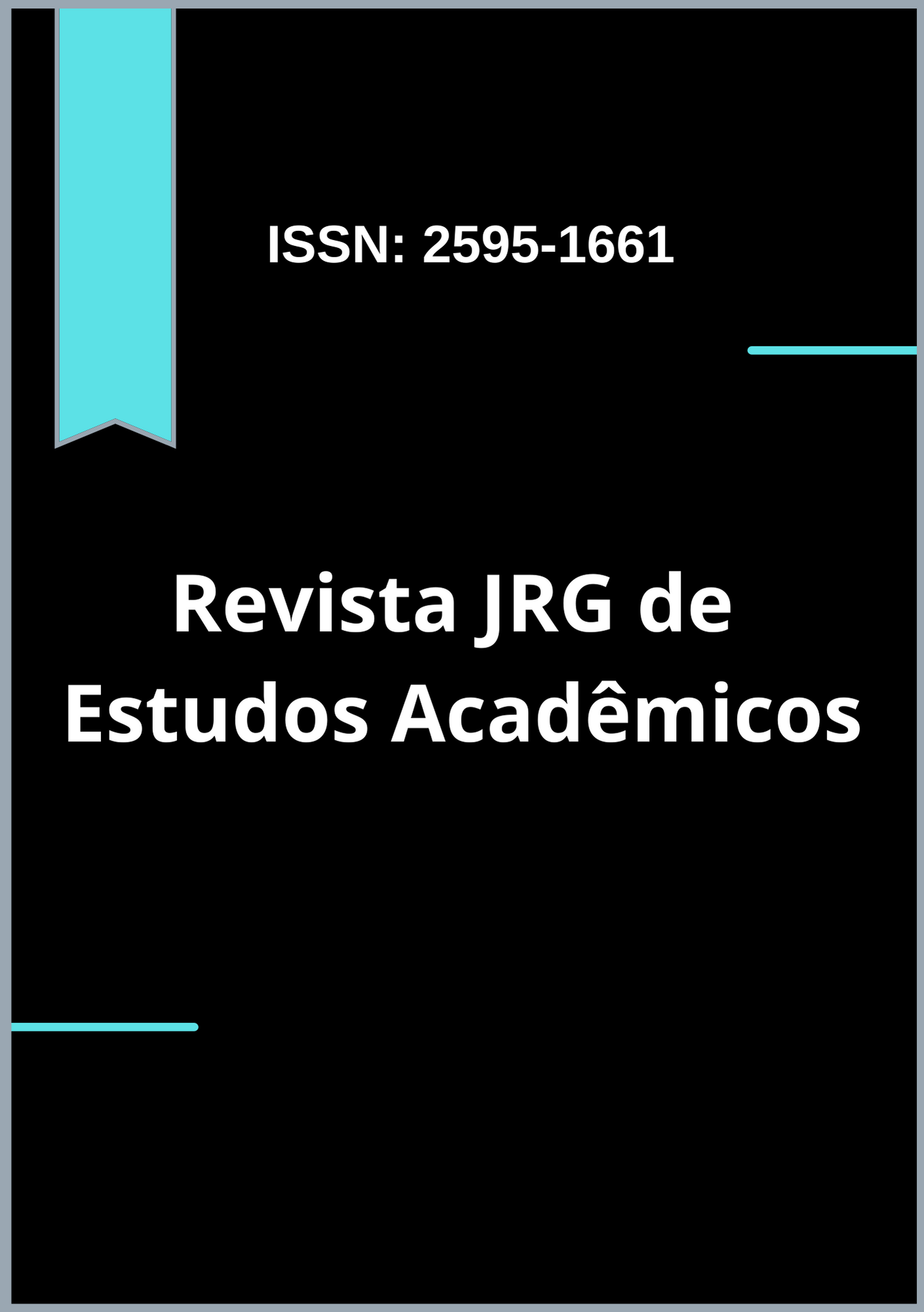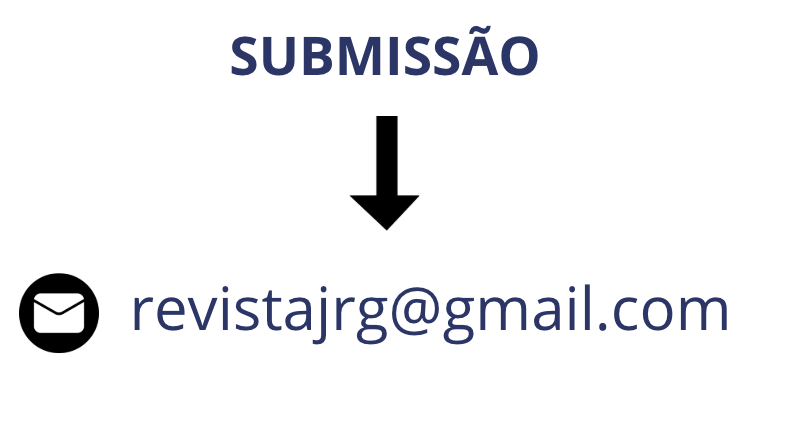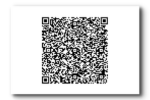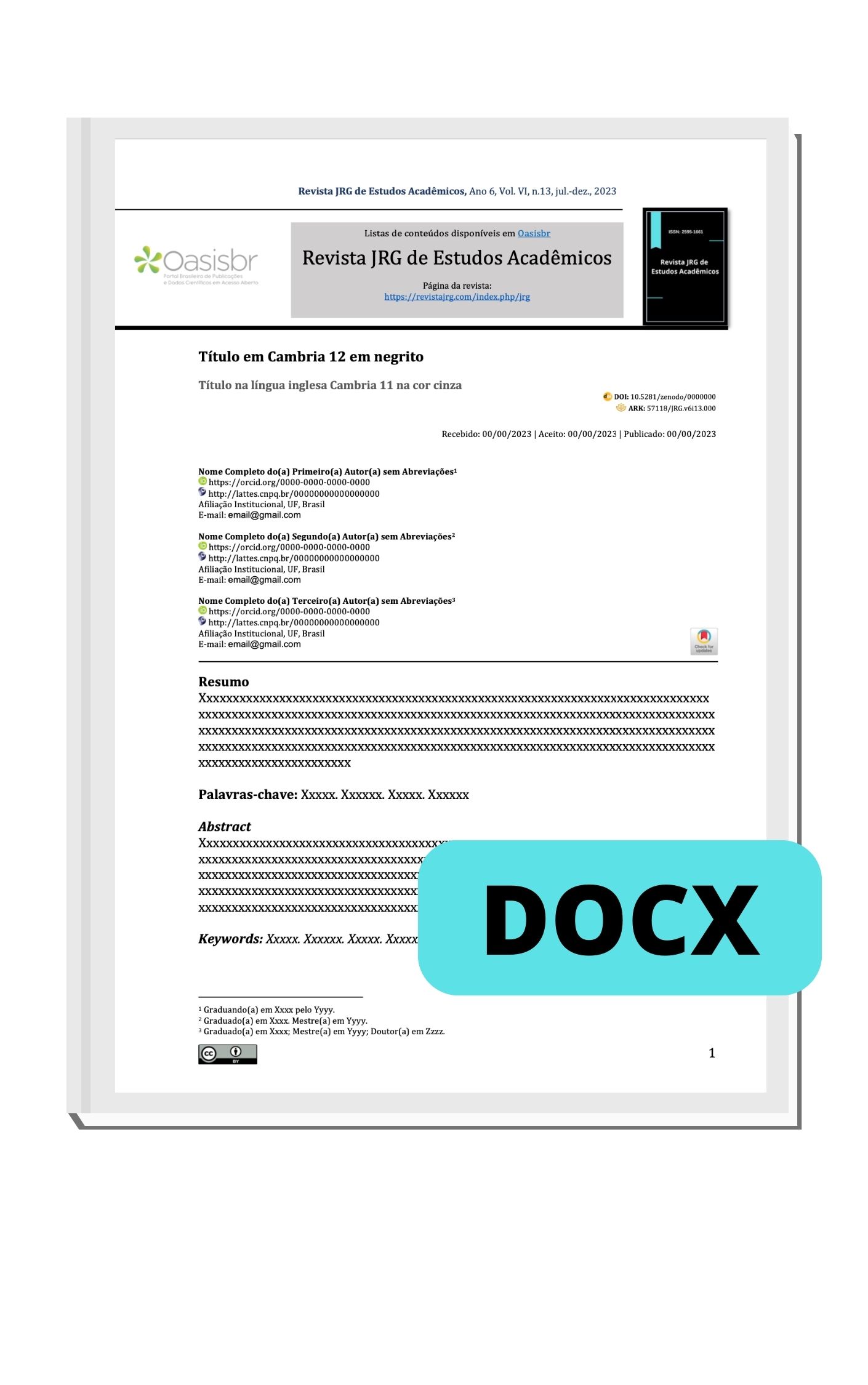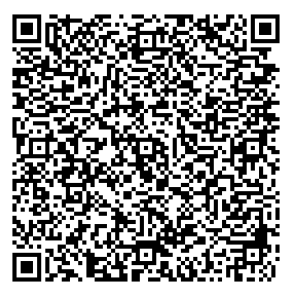A new and old pandemic – the Burnout Syndrome
DOI:
https://doi.org/10.5281/zenodo.7308055Palavras-chave:
Burnout syndrome, Behavior Analysis, Pandemic, CopingResumo
The Burnout Syndrome (SB) is known worldwide, but scientific studies only started from the researches made by the American psychologist Freudenberger. Its concept encompasses three dimensions: emotional exhaustion, depersonalization and low professional achievement. It is currently a student in various fields of human knowledge, from Anthropology to Psychology. The area of Psychology that most researchers BS is the Psychodynamics of Work in which they call it "Malaise". However, researchers involving BS under the perspective of Behavior Analysis is scarce in Brazil and in the world. This study aims to analyze BS in several countries, from developed to poor countries, and in this sense supports the thesis that it is a pandemic. It is a study of a theoretical nature, of qualitative, descriptive and bibliographic nature and has as theoretical basis Skinner's Radical Behaviorism
Downloads
Referências
Amaral, G. A. (2018). Escuta clínica do trabalho e (re)significação do sofrimento de professoras readaptadas. 2018. 234 f. Tese (Doutorado em Psicologia Social, do Trabalho e das Organizações), Universidade de Brasília, Brasília.
Artal, F.J.C. & Vazquez-Carrera, C. (2013). Burnout Syndrome in na International Setting. In Burnout for Experts (Book), p. 14-31. DOI: 10.1007/978-1-4614-4391-9_2.
Bakker, A.B. & Schaufelli, W.B. (2008). Positive organizational behavior: Engaged employees in flourishing organizations. Journal of Organizational Behavior, 29, p. 147-154. DOI:https://doi.org/ 10.1002/job.515
Bianchini Mataroso,M. (1997). El Síndrome del Burnout en personal profesional de la salud. Medicina Legal de Costa Rica, 13-14(2-1-2), 189-192. Retrieved January 13, 2021, from http://www.scielo.sa.cr/scielo.php?script=sci_arttext&pid=S1409-00151997000200017&lng=en&tlng=es.
Bríones Mella, D. (2007). Presencía de síndrome de Burnout em poblaciones policiales vulnerables de Carabineros de Chile. Ciência & Trabajo, 9(24), 43-50.
Diaz Araya S.(2007) Comportamiento del síndrome de desgaste profesional en médicos que laboraron en Coopesalud R.L., de agosto a octubre de 2004. Acta Méd Costarric. 2007;49(2):107-10.
Duarte, F. S. (2014). Dispositivos para a escuta clínica do sofrimento no trabalho: entre a clínica da cooperação e das patologias. 2014. 142 f., il. Dissertação (Mestrado em Psicologia Social, do Trabalho e das Organizações), Universidade de Brasília, Brasília;
Engles, F. (2008) A situação da Classe trabalhadora na Inglaterra – segundo as observações do autor e fontes autênticas. São Paulo: Boitempo.
Faúndez, V.E.O. & Gil-Montes, P.R. (2007). Prevalencia del síndrome de quemarse por el trabajo (burnout) em trabajadores de servicios em Chile. Información Psicológica, 91, 43-52. Recuperado de https://www.researchgate.net/publication/28308381_Prevalencia_del_Sindrome_de_Quemarse_por_el_Trabajo_burnout_en_trabajadores_de_servicios_en_Chile/link/0deec534528dcd280d000000/download
Fiadzo, E., Golembiewski, R. T., Luo, H., Bradbury, M., & Rivera, T. L. (1997). Burnout in Ghanaian hospitals: Phase model fi ndings in sub-Saharan Africa. Journal of Health and Human Services Administration, 19 , 442–466. Recuperado de https://libres.uncg.edu/ir/asu/f/Bradbury_Mark_1997_Burnout_Ghanaian_completed.pdf
Franco, G. (2020). Prevention is far better than cure - Revisiting the past to strengthen the present: the lesson of Bernardino Ramazzini (1633-1714) in public health (Contents - Preface - Overview). Italy: Youcanprint
Freudenebberger, H.S.(1974). Staff burn-out. Journal of Social Issues, 30(1), 159-165. DOI: https://doi.org/10.1111/j.1540.4560.1974.tb00706.x.
Godfrey, S.; Thêron. J.; Visser, M. (2007). The state of collective bargaining in South Africa: an empirical and conceptual study of collective bargaining. Cape Town: University of Cape Town (Working Paper, n. 07/130). Recuperado de https://open.uct.ac.za/bitstream/item/7388/DPRU_WP07-130.pdf?sequence=1.
Grau A, Flichtentrei D, Suner R, Prats M, Braga F.(2009) Influencia de factores personales, profesionales y transnacionales en el síndrome de burnout en personal sanitario hispanoamericano y español. Revista Espanhola de Salud Publica.83(2):215-30.
Galván, M. F., Vassallo, J. C., Rodríguez, S. P., Otero, P. , Montonati, M.M., Cardigni, G., Buamscha, D. G., Rufach, D. , Santos, S., Moreno, R. P., & Sarli, Mariam. (2014). Síndrome de desgaste profesional (burnout) en médicos de unidades de cuidados intensivos pediátricos en la Argentina. Revista de la Sociedad Boliviana de Pediatría, 53(1), 29-36. Recuperado de 2021, de http://www.scielo.org.bo/scielo.php?script=sci_arttext&pid=S1024-06752014000100008&lng=es&tlng=es.
Gil-Monte, P.R. & Faúndez, (2011). Psychometric Properties of the Spanish Burnout Inventory in Chilean Professionals Working to Physical Disable Peaple. The Spanish Journal of Psychology, 14(1), 441-451. DOI doi:10.5209/rev_SJOP.2011.v14.n1.40
Hirsch,A. (2005). Season of hope: economic reform under Mandela and Mbeki. South Africa/Ottawa: University of KwaZulu-Natal Press/IDRC,Capturado de https://www.idrc.ca/sites/default/files/openebooks/215-5/index.html
Hyeda, A. & Hamdar, Z. (2011). Avaliação da produtividade na síndrome de burnout. Revista Brasileira de Medicina do Trabalho, 9(2), 78-84. Recuperado de http://www.anamt.org.br/site/upload_arquivos/revista_brasileira_volume_9_n%C2%BA_2_121220131020533424.pdf.
Hutcheson, S.; DEAN, N.; Campbell, H. & FieldingI, W.J. (2020). The impacton COVID-19 control measures on stress in the Bahamas. Project Social Issues in The Bahamas, 1-12. Recuperado de https://www.researchgate.net/publication/344779435_The_impact_on_Covid-19_control_measures_on_stress_in_The_Bahamas.
Jiménez, A. E., Figueroa, M. J., Gutiérrez, J., & Celis, E. R. M. (2012). Burnout, apoyo social y satisfacciónlaboral en docentes. Revista Semestral da Associação Brasileira de Psicologia Escolar e Educacional, 16(1), 125-134.
Lee, R.T. & Ashforth, B.E.(1993). A further examination of managerial burnout: toward na integrated model. Journal of Organizational Behavior , 14(3), 3-20. DOI: https://doi.org/10.1002/job.4030140103
Lima, F. D., Buunk, A. P., Araújo, M. B. J., Chaves, J. G. M., Muniz D. L. O., & Queiroz, L. B. (2007). Síndrome de Burnout em residentes da Universidade Federal de Uberlândia-2004. Revista Brasileira de Educação Médica, 31(2), 137-46. DOI https://doi.org/10.1590/S0100-55022007000200004.
Lizano, E.L. & Sapozhnikoc,B.L. (2018). Exploring the meaning of job burnout beyond the Western context: A study of Salvadoran social workers. International Social Work, 21(6), 857-866l DOI: https://doi.org/10.1177/0020872816676884.
Mackenzie, M. ; Walker, T & Chim, C. (2018). Prevalence of Burnout in Bahamian Health Care Personnel. Journal of Occupational and Environmental Medicine, 60(8), 434-435. DOI: https://doi.org/ 10.1097/JOM.0000000000001383
Martinéz, I.M.M. & Pinto, A.M. (2005). Burnout em estudiantes universitários de Espana y Portugal y su relación com variables acadêmicas. Aletheia, Canos 21, p.21-30. Recuperado de http://pepsic.bvsalud.org/scielo.php?script=sci_arttext&pid=S1413-03942005000100003&lng=pt&tlng=es.
Marucco A.M, Flamenco E., Ragazoli P.N (2004). Estudio para evaluar el Síndrome de Quemarse por el trabajo (burnout) y la calidad de vida laboral en docentes de educación primaria básica (ex EGB 1 y 2) del Programa Integral para la Igualdad Educativa del Conurbano Bonaerense Sur. Revista Eletrônica de Inter-Ação Psy.1(1):19-33.
Moreira, Amanda Sorce, & Lucca, Sergio Roberto de. (2020). Fatores psicossociais e Síndrome de Burnout entre os profissionais dos serviços de saúde mental. Revista Latino-Americana de Enfermagem, 28, e3336. Epub 31 de agosto de 2020. DOI: https://doi.org/10.1590/1518-8345.4175.3336
Maslach, C., & Jackson, S. E. (1981). The measurement of experienced burnout. Journal of Occupational Behavior, 2(1), 99-113. doi: 10.1002/job.4030020205
Maslach, C., & Leiter, M. P. (1997). The truth about burnout: How organization cause, personal stress and what to do about it. San Francisco: Jossey-Bass.
Maslach, C., Schaufeli, W. B., & Leiter, M. P. (2001). Job burnout. Annual Review Psychology, 52(1), 397-422. doi: 10.1146/annurev.psych.52.1.397
Ndetei, D. M., Pizzo, M., Maru, H., Ongecha, F. A., Khasakhala, L. I., Mutiso, V., et al. (2008). Burnout in staff working at the Mathari psychiatric hospital. African Journal of Psychiatry, 11 , 199–203. Recuperado de DOI: 10.4314/ajpsy.v11i3.30269
Olley, B. O. (2003). A comparative study of burnout syndrome among health professionals in a Nigerian teaching hospital. African Journal of Medicine and Medical Sciences, 32 , 297–302. PMID: 15030092.
Onylezugbo, E., & Nawfor, C. (2010). Construct validation of nurse’s self-concept questionnaire in Nigeria. European Journal of Social Sciences, 15 , 467–474.
Organização Panamericana de Saíde/Brasil(2020). CID: burnout é um fenômeno ocupacional. Brasília, OPAS. Recuperado de https://www.paho.org/bra/index.php?option=com_content&view=article&id=5949:cid-burnout-e-um-fenomeno-ocupacional&Itemid=875.
Ramirez, D.R.Z.; Moreno, M.P.; Beltran, C.A. & Perales, C.A. (2014). Burnout y work engagement em docentes universitários de Zacatecas. Ciencia & Trabajo, 16(50), 116-120. DOI http://dx.doi.org/10.4067/S0718-24492014000200010.
Saborio Morales, L., & Hidalgo Murillo, L. F. (2015). Síndrome de Burnout. Medicina Legal de Costa Rica, 32(1), 119-124. Retrieved January 12, 2021, from http://www.scielo.sa.cr/scielo.php?script=sci_arttext&pid=S1409-00152015000100014&lng=en&tlng=.
Schmitz, G.A. (2015). Síndrome de Burnout: uma proposta de análise sob o enfoque analítico-Comportamental. Dissertação ( Mestrado em psicologia). Universidade Estadual de Londrina, Londrina-PR, recuperado de http://www.uel.br/pos/pgac/wp-content/uploads/2015/10/S%C3%ADndrome-do-burnout-uma-proposta-de-an%C3%A1lise-sob-enfoque-anal%C3%ADtico-comportamental.pdf
Schmitz, G.A. & Soares, M.R.Z. (2019). Saúde Mental na Universidade – a compreensão da Síndrome de Burnout em universitários a partir da Análise do Comportamento. Revista Idealização, 21(1),e-ISSN: 1982-3010. DOI DOI: https://doi.org/10.48075/ri.v21i1.23964
Silva, J.C. & Paschoarelli, L.C. (2010). A evolução histórica da ergonomia no mundo e seus pioneiros. São Paulo: Editora UNESP/Cultura Acadêmica.
Silva, J.L.L.; Souza, A.C.; Soares, R.S.; Teixeira, E.R.; Costa, F.S.; Oliveira, M.B.B. (2018). Prevalência da Síndrome de Burnout entre trabalhadores hidroviários. Revista de Enfermagem da UERJ, 26:e26131 p.1-6. DOI: OI: http://dx.doi.org/10.12957/reuerj.2018.26131
Suñer-Soler,R. Grau-Martin,A. Flichtentrei,D. Prats,M; Braga,F.; Font-Mayolas, S. & Graus, M.G. (2004). The consequences of burnout syndrome among healthcare professionals in Spain and Spanish speaking Latin American countries. Burnout Research,1 (2), 82-90. DOI: 10.1016/j.burn.2014.07.004
Talbot, K.; Mercer, S. Exploring university ESL/EFL teachers’ emotional well-being and emotional regulation in the United States, Japan and Austria. Chin. J. Appl. Linguist. 2018, 41, 410–432.
Thomas, L.S., & Valli, A. (2006). Levels of occupational stress in doctors working in a South African public-sector hospital. South African medical journal , 96 , 1162–1168.PMID: 17167700
Torre, M., Santos Popper, M. C., & Bergesio, A. (2019). Burnout prevalence in intensive care nurses in Argentina. Enfermería Intensiva (English Ed.), 30(3), 108–115. doi:10.1016/j.enfie.2018.04.005
VILLAVERDE, D., UNDA, S., ESCOTTO, E., & FLORES, R. (2019). Personality traits that predict the Burnout Syndrome on Mexican Teachers. Propósitos y Representaciones, 7(3), 41-71. doi: http://dx.doi.org/10.20511/pyr2019.v7n3.346
World Health Organizational (WHO). Gerenciando as saídas da força de trabalho (pp. 99-119). Genebra, Suíça. Recuperado de https://www.who.int/whr/2006/06_chapter5_pr.pdf.
Downloads
Publicado
Como Citar
Edição
Seção
ARK
Licença

Este trabalho está licenciado sob uma licença Creative Commons Attribution 4.0 International License.
